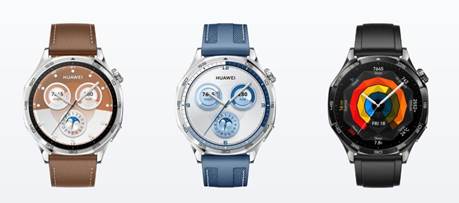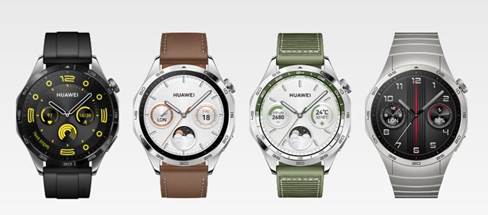The question of whether
smartwatches are waterproof involves understanding international water
resistance standards, manufacturer specifications, and practical usage
scenarios. Modern smartwatches employ sophisticated engineering to protect
against water intrusion, but the level of protection varies significantly
across models and price points. This examination explores how smartwatch water
resistance works, what the various ratings actually mean for users, and how to
properly maintain this protection over time. The technology behind water
resistance represents a complex interplay of gasket systems, adhesive barriers,
and nano-coatings that work together to create devices that can withstand
everything from accidental splashes to intentional swimming sessions.

Water Resistance Standards and
Ratings
ATM and IP Rating Systems
Smartwatch water resistance is
measured through two primary rating systems: ATM (atmospheres) and IP (Ingress
Protection). ATM ratings indicate static pressure resistance, with 1 ATM
equivalent to 10 meters of water pressure. However, this doesn't mean a 5 ATM
watch can actually be used at 50 meters depth—real-world conditions like
movement and water temperature affect performance. IP ratings consist of two
digits: the first indicating solid particle protection (6 being dust-tight) and
the second representing liquid protection (8 being protected against prolonged
immersion). The huawei watch gt6 pro typically carries a 5 ATM rating, meaning it can withstand
water pressure equivalent to 50 meters depth, suitable for swimming and
showering.

Real-World Water Resistance
Manufacturers test water resistance
under controlled laboratory conditions that may differ from actual usage
scenarios. The ratings assume fresh water at specific temperatures and
pressures, while real-world conditions involve moving water, chemicals (chlorine,
salt), temperature variations, and physical movement that can increase pressure
on seals. Most smartwatches with 3-5 ATM ratings are suitable for rain,
splashes, showering, and swimming in pools, while higher ratings (10 ATM+) may
be suitable for snorkeling or recreational diving. It's crucial to understand
that water resistance diminishes over time due to seal degradation, temperature
changes, and physical impacts to the device.
Usage Guidelines and Limitations
Recommended Water Activities
For smartwatches with 3-5 ATM
resistance like most current models, safe activities typically include hand
washing, being caught in rain, showering (with precautions about soap and
shampoo), and swimming in calm pool water. The devices can track swimming workouts,
measuring laps, strokes, and calories burned while submerged. However, users
should avoid pressing buttons underwater unless specifically designed for
underwater operation, as this can force water into the mechanism. After water
exposure, rinsing with fresh water and thorough drying helps maintain water
resistance by removing chlorine, salt, and other potentially corrosive
substances.
Activities to Avoid
Despite their water resistance
ratings, smartwatches should be protected from high-velocity water activities
like waterskiing, jet skiing, or diving entry, where the force of impact can
exceed rated pressures. Hot water environments like saunas, steam rooms, and
hot tubs can damage seals and allow moisture penetration due to thermal
expansion. Salt water requires immediate rinsing to prevent corrosion, and
chemicals in perfumes, solvents, or detergents can degrade gaskets and seals
over time. The Huawei Watch GT 6 Pro with its titanium alloy body and advanced
sealing provides robust protection, but still requires reasonable care to
maintain its water resistance throughout its lifespan.
Maintenance and Long-Term Care
Preserving Water Resistance
Maintaining a smartwatch's water
resistance requires regular care and awareness. Users should avoid exposing the
device to extreme temperature changes that can cause materials to expand and
contract, potentially compromising seals. Charging should only occur with a
completely dry device and charging contacts, as electricity and moisture can
cause serious damage. Regular inspection of seals and timely replacement of
worn components (especially if the watch receives impacts or shows signs of
wear) helps maintain protection. Most manufacturers recommend annual pressure
testing for frequently used devices, though this service may not be widely
available for consumer smartwatches.
Recognizing Compromised Protection
Signs of diminished water
resistance include fogging under the glass, moisture in sensors, or unexpected
behavior after water exposure. If a watch has been significantly impacted,
dropped, or serviced by unauthorized technicians, its water resistance cannot
be guaranteed. The Huawei Watch GT 6 Pro's nanocrystalline ceramic back and
sapphire glass provide excellent protection, but like all smartwatches, it
requires proper care to maintain its water-resistant qualities. Manufacturers
typically exclude water damage from warranties, as it's considered resulting
from improper use rather than manufacturing defects.
Conclusion
No smartwatch is truly
waterproof—instead, they offer varying degrees of water resistance that users
must understand and respect. The technology has advanced remarkably, allowing
today's devices to withstand conditions that would have destroyed earlier generations
of electronics. However, this protection comes with limitations and requires
user awareness to maintain effectiveness. By understanding rating systems,
following usage guidelines, and providing proper maintenance, smartwatch owners
can confidently use their devices in appropriate wet conditions while avoiding
situations that could cause damage. As materials and sealing technologies
continue to improve, we can expect even better water resistance in future
models, but the fundamental principle will remain: water resistance is a
feature to be understood and respected, not taken for granted.



